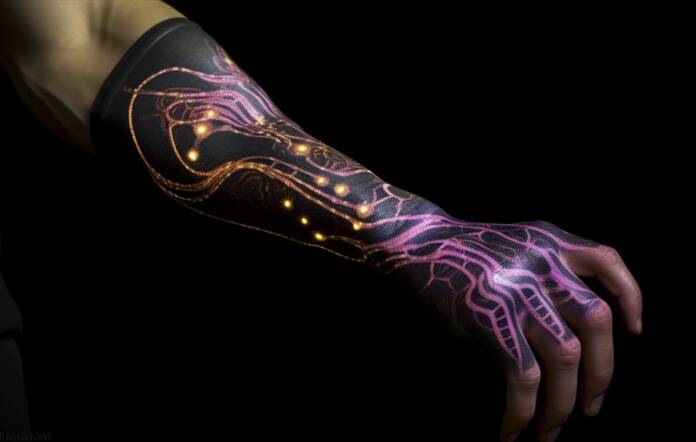Turkish researchers have made a breakthrough in the wireless technologydeveloping nanotattoos that do not require batteries or cables to establish communications. This breakthrough breaks down the barriers of external power and the need for wired connections, opening up new possibilities for biosensor sensor technology.
Creation of the nanotattoos
These innovative nanotattoos have been developed by Kristen D. Belcastro, from Yeditepe University, and Onur Ergen, from Istanbul Technical University. The composition is a game of two inks. The first is an ink zinc oxide containing nanowires embedded. The second is an ink of conductive graphene airgel, an ultralight porous material with excellent conductivity properties. These two inks are painted on the skin using two separate needles, achieving a bond at the nanometer level upon contact.
Wireless communication
The operating principle of these nanotattoos is based on the piezoelectric activity, a phenomenon by which certain materials generate electricity in response to mechanical pressure. In this case, the nanotattoos change shape and convert this mechanical energy into electrical energy.
To establish communication, researchers use a technique called backscatter, a process in which objects reflect a portion of the radio waves they receive. This technique is similar to that used in RFID tags, but is not limited to a specific number of allowed frequencies.
future applications
The application of these nanotattoos in the field of medical care is promising. One example is their use as wireless EEG sensors for brain monitoring. The researchers are also exploring the possibility of using them to collect data through sweat and saliva, without the need for batteries.
But the potential of nanotattoos goes beyond the human body. They can be applied to any surface, from vehicles to chairs, and transmit relevant information for diagnosis or efficiency optimization.
This discovery, along with a €1.4 million funded quantum electron engineering project, could transform the way we interact with technology and the world around us. We will no longer just be consumers of technology, but we will form an integral part of its communication networks.
Learn more at spectrum.ieee.org
Image merely illustrative














